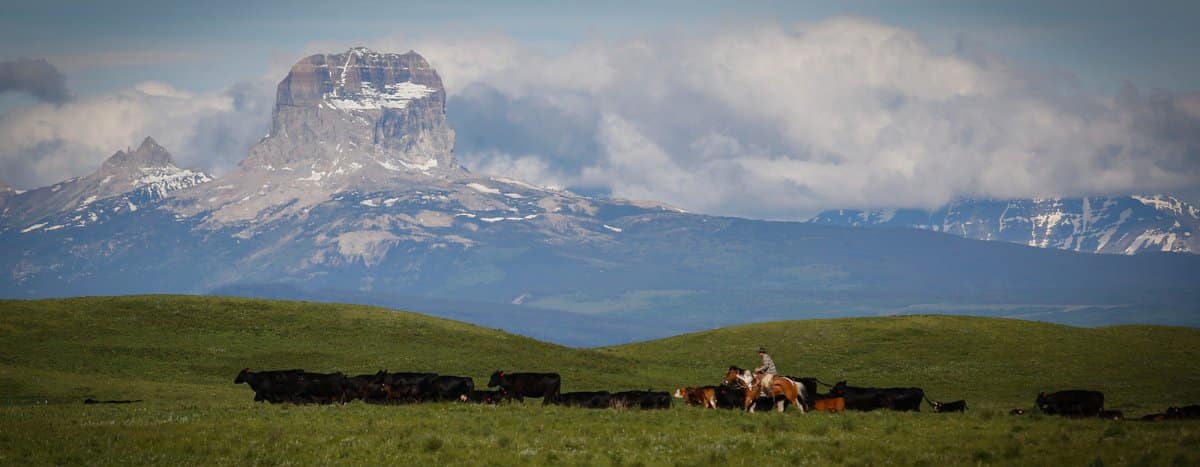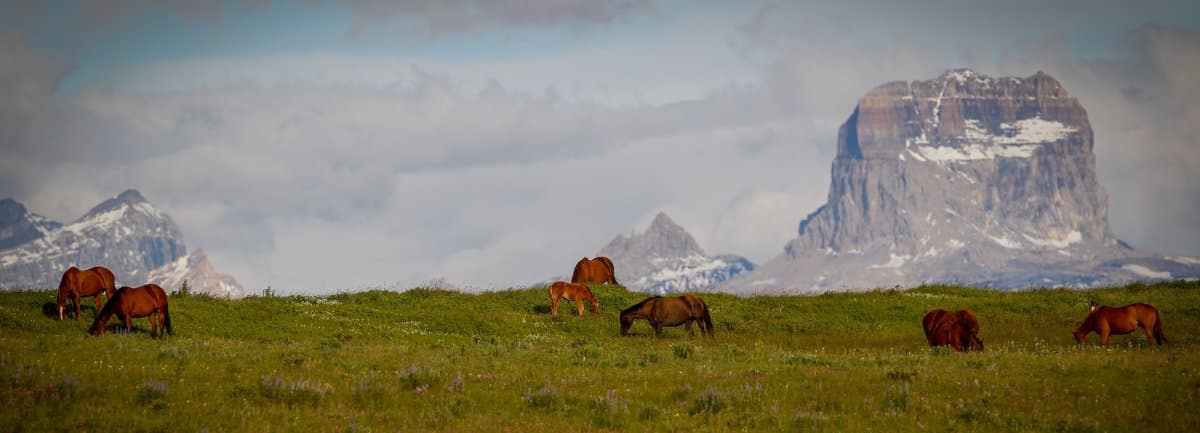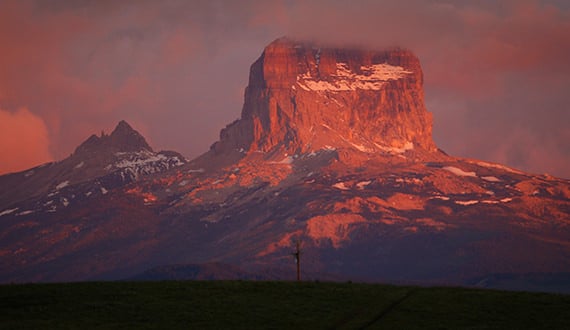Chief Mountain, as seen from North Fork Ranch, is a prominent towering monolith that stands alone facing westerly along the Rocky Mountain Front on the eastern edge of Glacier National Park. Named for its commanding presence, it is also known as “Ninaiistako”, a name given to it by the Blackfeet Indians, translating to “Great Chief”. Although it is not the highest peak in Glacier, the 9,085 foot-tall giant can be seen for over a hundred miles away in both Montana and Alberta, Canada. It lies half in Glacier National Park, along the northeast boundary, and half in the Blackfeet Reservation to its east. The summit of Chief Mountain resides 5 miles south of the Canadian border and Waterton National Park.
Since the nature of the mountain is so massive, it was often used by early travelers as a landmark and as a superficial boundary. It is one of only a few mountains included in early maps and appeared as “King Mountain” on maps published in England in 1795 and 1796. It has had a variety of changing titles through history, before settling on Chief Mountain.

For centuries, it was an important and sacred mountain to Native American tribes and the Blackfeet Nation. It continues to remain sacred to First Nations peoples residing in the United States and Canada. For the Blackfeet Nation and other tribes of their confederacy, Chief Mountain is considered to hold ancient knowledge and have special powers. It is the oldest spirit of any of the mountains, and creation stories are linked to it for each of the tribes. The base of the mountain also serves as a gathering spot for sweet grass ceremonies, prayer-flag placement and other rituals. It was also found to be the site of ancient burials. For millennia, it has help define the Blackfeet’s homeland.

Today, while the 49th parallel that divides Canadian Blackfoot tribes and American Blackfeet tribes is an arbitrary division, the region continues to bridge together different tribes through the connection of shared land and landmarks. The continued collaboration between the National Park Service, Parks Canada and the Blackfoot Nation will protect the future of the region of Glacier and Waterton National Parks and this natural wonder for centuries to come.
Chief Mountain has an awe-inspiring presence that radiates with every sun rise and sunset, and the continual transformation of the clouds and sky provide an ever-changing and dramatic backdrop. It stands as a sentinel of North Fork Ranch and is prominent in the western horizon from almost every vantage on of this productive Montana cattle ranch.
CONTACT TIM ANDERSON TO LEARN MORE ABOUT NORTH FORK RANCH

